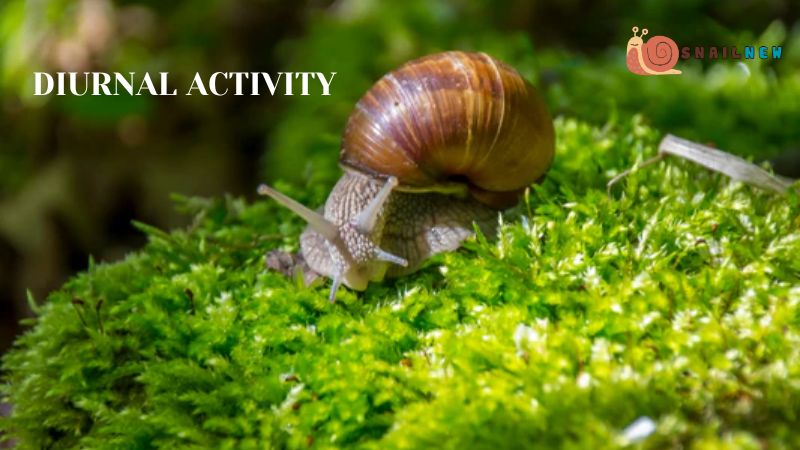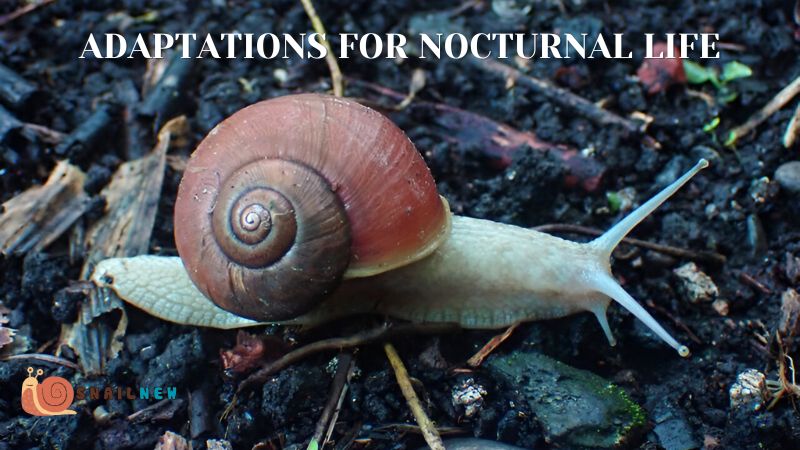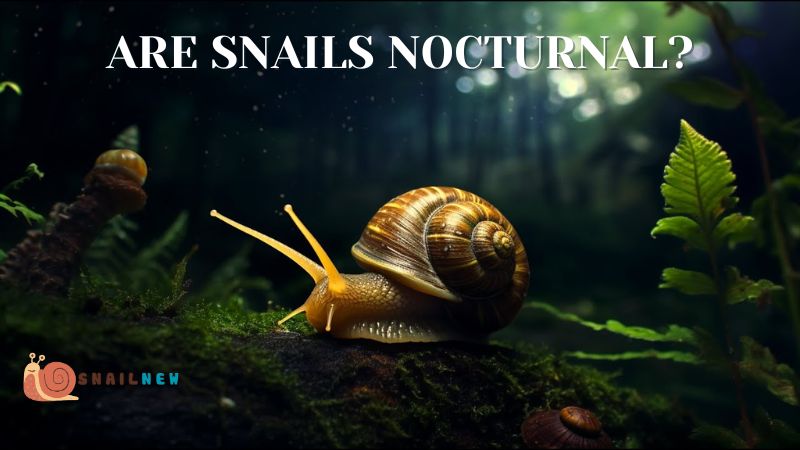Snails, with their slow and steady pace, have long captivated the curiosity of both scientists and casual observers. One of the intriguing aspects of these gastropods is their activity patterns. Many wonder, are snails nocturnal? In this comprehensive exploration, Snailnew delve into the world of snail behavior, uncovering the truth behind their activity rhythms.
Table of Contents
ToggleUnderstanding Snail Activity:
Snails, categorized under the class Gastropoda, exhibit diverse activity patterns influenced by factors like species, habitat, and environmental conditions. While some species primarily display nocturnal behavior, others are more active during daylight hours. This variation prompts the question: are snails inherently nocturnal, or does their activity pattern vary based on individual and environmental factors? Understanding the natural behavior of snails sheds light on their ecological roles and helps inform their care in captivity.
Are Snails Nocturnal? Nocturnal Behavior
It is widely observed that many snail species are more active during the night. Under the cloak of darkness, these creatures emerge from their hiding spots to forage for food and engage in other activities. This nocturnal behavior is particularly prevalent in species inhabiting regions with hot and arid climates, where daytime temperatures can be excessively high. In such environments, snails may retreat into shaded areas or underground burrows during the day to avoid desiccation, emerging only when conditions are cooler and more favorable for activity.

Contrary to widespread misconception, not all snails adhere strictly to nocturnal habits. Certain species showcase crepuscular behavior, indicating their peak activity during the transitional periods of dawn and dusk. This adaptation enables them to capitalize on the cooler temperatures and diminished predation risk characteristic of these twilight hours. Understanding these nuances in snail behavior underscores the intricacies of their ecological strategies and highlights the importance of environmental factors in shaping their activity patterns.
Diurnal Activity:
While nocturnal and crepuscular behavior is prevalent among numerous snail species, there exist those predominantly active during daylight hours. These diurnal snails utilize the daytime period for essential tasks like foraging, mating, and other activities crucial to their survival. Their preference for daytime activity stems from various factors, including habitat structure, predator avoidance strategies, and resource availability. Understanding these intricacies sheds light on the diverse adaptations of snails and the complex interplay between their behavior and environmental influences.

Environmental Influences:
The activity patterns of snails are heavily influenced by environmental factors such as temperature, humidity, and light intensity. In cooler and more humid climates, snails may be more active during the day when conditions are optimal for movement and foraging. Conversely, in hot and arid environments, nocturnal activity may be favored as a means of avoiding heat stress and conserving moisture.
Furthermore, seasonal changes can also impact snail activity patterns. During the warmer months, when temperatures are higher and food resources are abundant, snails may exhibit increased activity regardless of the time of day. In contrast, during colder seasons or periods of drought, their activity may be reduced as they enter a state of dormancy or aestivation to conserve energy and moisture.
Adaptations for Nocturnal Life:
Snails that exhibit nocturnal behavior have evolved several adaptations to thrive in low-light conditions. One such adaptation is the development of specialized sensory organs, including tentacles and eyes, that are optimized for detecting food, navigating their environment, and avoiding predators in the darkness. Additionally, nocturnal snails may possess heightened chemosensory abilities, allowing them to locate food sources through scent cues even in the absence of visual stimuli.

Behavioral Observations:
Studying snail behavior in their natural habitats offers invaluable insights into their activity patterns. Researchers employ various field techniques, including mark-recapture methods, radio telemetry, and video surveillance, to monitor snail movements and behavior extensively. Through these observations, researchers can discern the myriad factors that influence snail activity, thereby enhancing our understanding of their ecology and biology. Such studies not only shed light on the intricacies of snail behavior but also contribute to broader ecological research and conservation efforts.
Conservation Implications:
Understanding the activity patterns of snails is crucial for their conservation, particularly in the face of environmental threats such as habitat destruction, climate change, and invasive species. By identifying key habitats and times of peak activity, conservation efforts can be targeted to maximize the protection of snail populations and their ecosystems.
Conclusion:
In conclusion, the question “are snails nocturnal?” reveals the complexity of snail behavior and the diverse strategies they employ to adapt to their environment. While many snail species exhibit nocturnal tendencies, others are diurnal or crepuscular in their activity patterns. Environmental factors such as temperature, humidity, and light intensity play a significant role in shaping snail behavior, highlighting the importance of understanding the ecological context in which these creatures live. By unraveling the mysteries of snail activity, we gain valuable insights into their fascinating world and the delicate balance of life in which they play a vital role.
Related Posts:
- Exploring the Lifespan of Snails: How Long Do Snails Live?
- Can Snails Reproduce Asexually? Nature's Ingenious…
- Exploring the Aquatic Realm: Can Snails Breathe Underwater?
- Unveiling the Enigmatic Lifespan: How Long Do…
- Exploring the Pace of Nature: How Fast Are Snails?
- Can Snails Feel Pain? Exploring the Enigmatic Question


